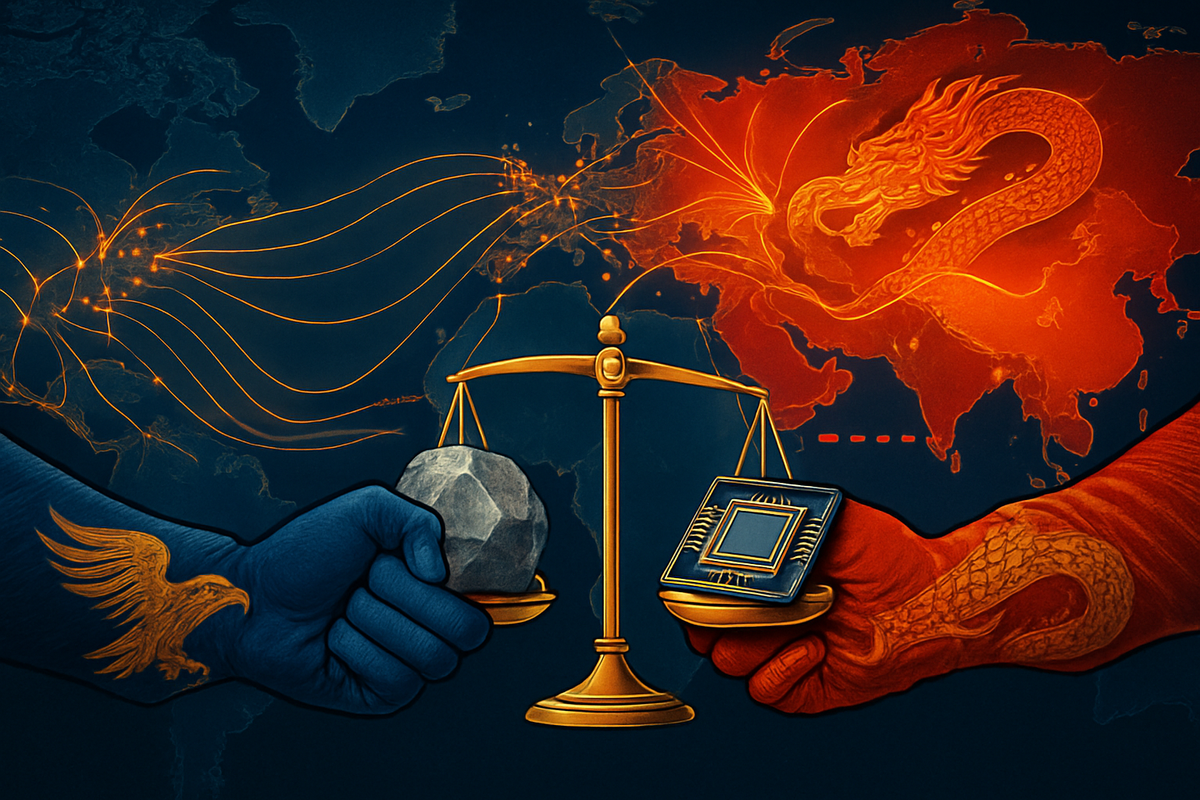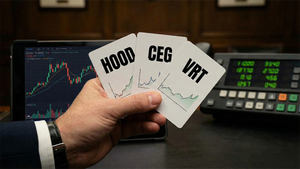
October 16, 2025 – China has significantly escalated its rare-earth restrictions, implementing its most extensive controls to date on these critical minerals and related technologies. These measures, which took full effect on October 9, 2025, are widely seen as a direct counter to ongoing US actions aimed at curbing China's technological advancement, rekindling intense trade tensions between the world's two largest economies. The move sends shockwaves through global supply chains, impacting industries from electric vehicles and consumer electronics to defense and renewable energy.
Beijing asserts these restrictions are vital for national security, resource protection, and maintaining technological leadership, while simultaneously leveraging its dominant position in the global rare-earth supply chain as a powerful geopolitical tool. The comprehensive nature of the new controls, which include extraterritorial application, signals a strategic shift that will compel a fundamental restructuring of global manufacturing and resource procurement for years to come.
Escalation in the Critical Minerals Arena
China's latest rare-earth restrictions represent the culmination of a series of strategic moves throughout 2025, transforming rare earths from a mere economic asset into a potent instrument of geopolitical leverage. Building on earlier export bans on processing technologies in December 2023 and initial element restrictions in April 2025, the October 9, 2025, announcement by the Ministry of Commerce (MOFCOM) marked a dramatic expansion.
The new measures encompass an expanded list of 12 critical rare-earth elements, covering nearly all 17 recognized elements. Crucially, the scope now includes associated mining and processing equipment, manufacturing technologies, and even foreign-produced items that incorporate certain Chinese-origin rare earths, applying an extraterritorial reach similar to US export controls. A "de minimis rule" means foreign-produced items containing as little as 0.1% of controlled Chinese rare-earth elements by value could be subject to Beijing's licensing regime. Exports are also explicitly prohibited for military end-uses or to enhance another country's military potential, directly impacting global defense contractors.
This escalation is deeply embedded in an intensifying trade and technology confrontation. The US, under both the Biden and Trump administrations, has progressively expanded its export controls on semiconductors, chip-making equipment, and other advanced technologies to China, citing national security concerns. China views its rare-earth restrictions as a direct retaliatory measure, a "trump card" to pressure the US for a rollback of its own export controls and tariffs. Initial market reactions have seen significant price increases for critical heavy rare earths like dysprosium and terbium, with jumps of 25-40%, alongside prolonged licensing approval times and a shift towards higher-priced contractual arrangements for international buyers.
Companies Brace for Impact: Winners and Losers Emerge
The expanded restrictions are creating a bifurcated global market, presenting significant challenges for companies heavily reliant on Chinese rare earths while opening opportunities for those developing alternative supplies.
On the losing side, Electric Vehicle (EV) Manufacturers outside China, such as Tesla (NASDAQ: TSLA) and Ford (NYSE: F), are particularly vulnerable. EV motors depend on several kilograms of rare-earth magnets for high-efficiency performance. Ford has already reported production shutdowns, and non-Chinese manufacturers face competitive disadvantages as Chinese rivals gain preferential access to these materials. Similarly, Consumer Electronics Companies like Apple (NASDAQ: AAPL) and Samsung Electronics (KRX: 005930), which use rare earths in smartphones, laptops, and displays, face potential supply constraints, increased costs, and delayed product launches.
Defense Contractors in the US and allied nations, including Lockheed Martin (NYSE: LMT) and Raytheon Technologies (NYSE: RTX), are directly threatened, as export licenses for military applications are largely denied. These companies rely on rare earths for advanced guidance systems, radar, and jet engine coatings, facing severe supply chain disruptions and the costly task of rapidly diversifying sourcing or redesigning components. Wind Turbine Manufacturers, especially in Europe, also face headwinds, as offshore models require substantial quantities of rare-earth magnets, potentially hindering renewable energy projects. Even Advanced Semiconductor Manufacturers like Taiwan Semiconductor Manufacturing Company (TSMC, NYSE: TSM) and SK Hynix (KRX: 000660) could see impacts on polishing compounds and other rare-earth-containing materials used in fabrication.
Conversely, companies involved in non-Chinese rare-earth mining, processing, recycling, or the development of rare-earth-free alternatives stand to benefit significantly. MP Materials (NYSE: MP), operating the Mountain Pass mine in California, is strategically positioned as the US seeks to reduce reliance on China. Australian producers like Lynas Rare Earths Ltd (ASX: LYC), Arafura Rare Earths (ASX: ARU), and Australian Strategic Materials (ASX: ASM) are seeing increased investor interest and are poised to become preferred suppliers for Western nations. Canadian company Ucore Rare Metals (TSXV: UEE / OTCQX: UURAF) is also a likely beneficiary. Companies developing rare-earth-free technologies, such as Lightwave Logic (NASDAQ: LWLG), whose electro-optic polymer platform is rare-earth-free, gain a competitive edge. Additionally, firms in rare-earth recycling, like American Battery Technology Company (NASDAQ: ABAT), and those adapting existing infrastructure, such as Energy Fuels (NYSE: UUUU), are seeing new opportunities. While some Chinese downstream manufacturers may struggle with export challenges, major state-backed entities like China Northern Rare Earth Group (SSE: 600111) and Shenghe Resources (SSE: 600392) have seen their stock prices surge due to their strategic importance and preferential access to domestic rare-earth materials, consolidating their control within China's value chain.
A New Era of Resource Nationalism and Geopolitical Chess
China's rare-earth restrictions signal a new phase of resource-based geopolitics, compelling a fundamental restructuring of global supply chains and intensifying strategic competition. This event fits into a broader industry trend of accelerating diversification away from China in critical mineral supply chains, driven by national security concerns and the imperative for technological autonomy. The extraterritorial reach of the new controls means that even foreign-produced items containing Chinese-origin rare earths are now subject to Beijing's licensing regime, globalizing China's regulatory influence.
The ripple effects are profound. Beyond direct supply disruptions and increased costs for manufacturers, the restrictions have triggered strong reactions from governments. The US, under President Donald Trump, has announced additional 100% tariffs on all Chinese goods, effective November 1, 2025, and imposed export controls on "critical software" for China-based entities, marking a dramatic escalation of the trade war. This tit-for-tat dynamic underscores the weaponization of economic dependencies.
Governments worldwide are responding with comprehensive strategies to secure critical mineral supplies. The European Union has accelerated its Critical Raw Materials Act, setting targets for domestic sourcing, recycling, and import diversification. The US has mobilized federal investments through the Defense Production Act and the Infrastructure Investment and Jobs Act to support domestic rare-earth projects and reduce reliance on foreign adversaries. International cooperation through initiatives like the US-led Minerals Security Partnership (MSP), which includes 14 countries, is also gaining momentum to develop alternative supply chains.
Historically, this situation draws parallels to the 1973 oil embargo, where control over essential resources was leveraged for geopolitical influence. China's long-term strategy can be traced back to Deng Xiaoping's 1992 statement: "The Middle East has its oil, China has rare earths… it is of extremely important strategic significance." Beijing's current actions are a manifestation of this vision, transforming rare earths into a powerful instrument to counter perceived aggressions from the US and reshape the global technological landscape.
The Path Forward: Diversification, Innovation, and Enduring Competition
In the short term (1-2 years), the global market will continue to grapple with price volatility, supply constraints, and increased operational costs. Companies will face longer licensing approval times and heightened scrutiny for exports, leading to potential production delays. Industries like defense, semiconductors, renewable energy, and EVs are directly impacted, compelling manufacturers to seek immediate, albeit costly, adaptations such as strategic stockpiling.
Longer term (3-10+ years), a profound restructuring of global rare-earth supply chains is inevitable. Western nations are aggressively pursuing diversification through increased investment in non-Chinese mining and processing, particularly in Australia, Canada, and the United States. This includes substantial public and private funding, such as the US Defense Production Act and JPMorgan Chase's $1.5 trillion Critical Minerals Initiative. There will also be an accelerated push for technological innovation, including research into rare-earth-free alternatives and advanced recycling technologies, to lessen reliance on restricted elements.
Strategic pivots for companies will involve establishing robust compliance frameworks to navigate China's extraterritorial controls, diversifying raw material sources, and investing in domestic processing capacities to build "mine-to-magnet" supply chains. International cooperation through alliances like the Minerals Security Partnership will be crucial for fostering alternative supply ecosystems. While significant progress is expected, establishing full supply chain independence is projected to take 7-10 years and come at a higher cost due to stricter environmental standards and the absence of integrated industrial ecosystems outside China.
Potential scenarios range from China continuing to use rare-earth controls as calibrated pressure, to a full-blown trade war with further escalations. The most likely outcome is a hybrid scenario: enduring Chinese influence, particularly in advanced processing and magnet production, coexisting with fragmented, regional supply blocs. While global efforts will gradually reduce China's market dominance, complete independence from Chinese technology or materials may remain elusive for the foreseeable future, ensuring that rare earths remain a focal point of geopolitical competition.
Navigating a Fragmented Future: Key Takeaways for Investors
China's recent rare-earth restrictions mark a pivotal moment in global trade and resource geopolitics. The key takeaway is the irreversible shift towards a more fragmented and nationalistic approach to critical mineral supply chains. This event underscores the strategic importance of rare earths, which are indispensable for modern technology and defense, and confirms their role as a powerful tool in international relations.
Moving forward, the market will be characterized by continued supply uncertainty and price volatility for rare earths. Investors should closely monitor developments in non-Chinese rare-earth mining and processing companies, as these are poised for significant growth driven by government backing and the global imperative for supply chain security. Companies with robust rare-earth-free alternatives or advanced recycling technologies also represent compelling opportunities. Conversely, firms heavily dependent on Chinese rare earths, particularly those in defense, high-tech manufacturing, and green energy sectors, face increased operational risks and potential competitive disadvantages.
The lasting impact will be a fundamental re-evaluation of global supply chain resilience and a sustained drive by nations to achieve greater self-sufficiency in critical materials. What investors should watch for in the coming months are further retaliatory measures from both the US and China, the pace of investment in alternative rare-earth projects, and the progress of international collaborations aimed at diversifying supply. The rare-earth sector will remain a critical battleground in the ongoing economic and technological rivalry between the US and China.
This content is intended for informational purposes only and is not financial advice





